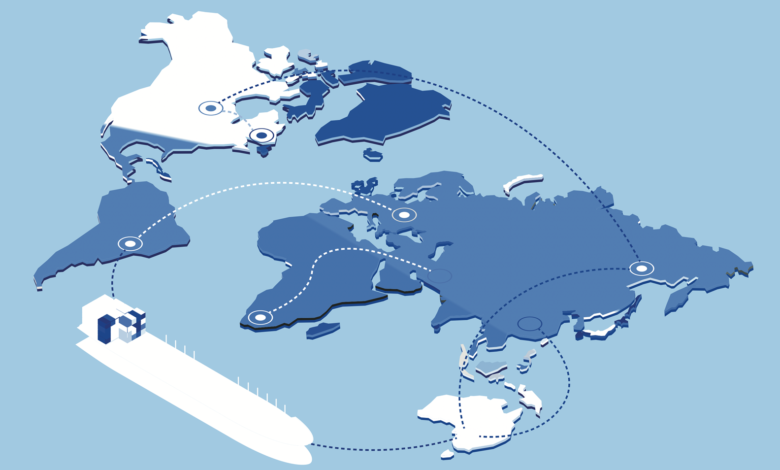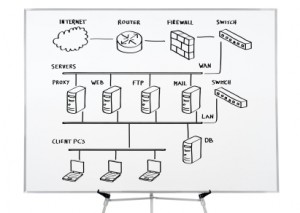Supply Chain Network Design: Navigating the Path to Efficiency and Resilience

Supply Chain Network Design is a critical aspect of modern business operations, shaping the intricate pathways through which products flow from manufacturers to end consumers. In this article, we delve into the complexities of Supply Chain Network Design, exploring its importance, challenges, and the strategic considerations that can lead to enhanced efficiency and resilience.
Understanding Supply Chain Network Design
At its center, Store network Organization Configuration includes improving the arrangement of the organization through which labor and products move. This cycle includes different components, for example, the determination of providers, appropriation focuses, distribution centers, and transportation courses. The objective is to make a consistent, practical, and responsive store network that lines up with hierarchical goals.
The Meaning of Compelling Supply Chain Network Design
A very much planned production network organization can give an upper hand by limiting expenses, decreasing lead times, and working on generally speaking responsiveness. It guarantees that items arrive at their objective promptly, meeting client assumptions and encouraging fulfillment. Moreover, a decisively planned organization can upgrade adaptability, permitting organizations to adjust to changing business sector elements.
Key Contemplations in Supply Chain Network Design
Ideal Area of Offices:
The choice of the right areas for assembling plants, stockrooms, and dissemination focuses is pivotal. Closeness to providers, clients, and transportation center points should be adjusted to limit transportation expenses and lead times.
Methods of Transportation:
Picking the correct method of transportation and laying out effective courses can fundamentally influence the expense and speed of item conveyance. Adjusting velocity and cost-viability is a sensitive undertaking in such a manner.
Stock Administration:
It is essential to achieve the ideal equilibrium in inventory levels. Insufficient inventory can result in stockouts and dissatisfied customers, while excessive inventory ties up capital and raises holding costs.
Integration of Technology:
Utilizing cutting edge innovations, for example, prescient examination, RFID, and computerization can smooth out cycles and upgrade perceivability across the inventory network, empowering proactive navigation.
Positive Effect: Accomplishing Functional Greatness
Executing a powerful Inventory network Organization Configuration decidedly impacts functional greatness. By decisively putting offices, enhancing transportation courses, and embracing mechanical progressions, organizations can encounter a consistent progression of products. This lessens costs as well as improves in general functional productivity.
Negative Impact: Vulnerabilities and Disruptions
On the other hand, businesses may be exposed to disruptions as a result of inadequate Supply Chain Network Design. Inadequately picked areas, wasteful transportation courses, and absence of mechanical coordination might bring about inflated expenses, delays, and eventually, client disappointment.
The Job of Information in Supply Chain Network Design
Information assumes a significant part in informed dynamic in Supply Chain Network Design. Using verifiable information, market patterns, and constant data can direct organizations in pursuing vital decisions. Progressed examination and demonstrating apparatuses are significant in mimicking various situations and foreseeing the effect of different organization designs.
Challenges in Supply Chain Network Design
Unsure Interest
It is difficult to design a network that can adjust to changing production requirements while reducing excess inventory in response to changing market demands.
Globalization
A careful design approach is required because operating in a globalized market introduces complexities in the management of cross-border transportation, regulations, and cultural nuances.
Quick Innovative Changes
The speedy advancement of innovation requires consistent variation, making it trying to pick the most reasonable advancements for long haul network plans.
Future Patterns in Supply Chain Network Design
Versatility and Adaptability
The center is moving towards building versatile inventory network networks that can endure disturbances and adjust quickly to changes in the business climate.
Sustainability
As natural worries rise, production network networks are progressively being planned in view of manageability, considering eco-accommodating transportation modes and limiting the by and large natural impression.
Blockchain Joining
The reception of blockchain innovation is on the ascent, offering upgraded straightforwardness, discernibility, and security in the store network.
Conclusion
Supply Chain Network Design is an essential and dynamic component of contemporary business strategy. Key considerations include finding a balance between responsiveness and cost-effectiveness, making use of technology, and adapting to new trends. As organizations explore the intricacies of worldwide business sectors and developing advances, a very much planned production network turns into an essential resource that drives effectiveness as well as strengthens versatility notwithstanding vulnerabilities. Embracing positive systems while moderating adverse consequences guarantees that the production network stays an upper hand for organizations in a consistently evolving scene.




